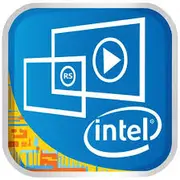Intel Core M-5Y10

Intel Core M-5Y10: An Ultraportable Processor for Mobility, Not Power
Introduction
The Intel Core M-5Y10 processor, released in 2014-2015, was revolutionary for its time due to its ultra-low power consumption and passive cooling. However, even a decade later, devices based on it remain relevant for a niche audience that values compactness and battery life. In this article, we will explore who this CPU is suitable for in 2025, how it handles modern tasks, and what to look out for when purchasing.
Architecture and Process Technology: Evolution in Miniature
Broadwell Architecture, 14nm, 2 Cores and 4 Threads
The Core M-5Y10 is built on the Broadwell architecture (5th generation Intel Core) with a 14nm process technology. It is the first mass-market CPU with a TDP of 4.5W, which does not require active cooling. Its key specifications include:
- 2 cores / 4 threads thanks to Hyper-Threading.
- Base frequency: 0.8 GHz, Turbo Boost up to 2.0 GHz.
- L3 cache: 4 MB — modest even for 2015.
- iGPU: Intel HD Graphics 5300 with 24 EUs and a frequency of up to 800 MHz.
Architecture Features
- Passive Cooling: The lack of a fan allows for the creation of laptops less than 10mm thick (for example, Apple MacBook 12" 2015).
- Power Saving Modes: Technologies like Speed Shift and Dynamic Tuning optimize performance under load.
Power Consumption and TDP: Quiet, But Not Fast
TDP 4.5W: The Cost of Compactness
Such a low thermal envelope (3-5 times less than modern U-series processors) means:
- The ability to operate without a cooler.
- A limitation on peak performance: under prolonged load, the frequency drops to 1.2-1.5 GHz.
Thermal Limitations
Even in 2025, laptops with the Core M-5Y10 suffer from throttling: for instance, during video conversion in HandBrake, the processor quickly drops its frequency, increasing task time by 2-3 times compared to modern Core i3 models.
Performance: Modest Results in 2025
Office Work and Web Browsing
- Geekbench 6: 687 (Single-Core) / 1326 (Multi-Core) — on par with Snapdragon 8cx Gen 2 (2020).
- Real-World Tasks:
- Running 10 tabs in Chrome + Word + Zoom: possible stutters.
- 4K YouTube: plays with hiccups without VP9 hardware decoding.
Multimedia and Gaming
- Video Editing: Only light edits in 1080p (DaVinci Resolve) with severe lags.
- Games:
- CS:GO — 20-25 FPS on low settings (720p).
- Minecraft — 30 FPS (Render Distance 8 chunks).
- Modern games (e.g., Genshin Impact) will not run.
Turbo Boost: A Brief Surge
Under short-term loads (opening an application), the frequency rises to 2.0 GHz, but falls back to 1.2-1.5 GHz after 10-15 seconds.
Usage Scenarios: Who is the Core M-5Y10 Suitable for in 2025?
1. Ultraportable Devices:
- Tablets with keyboards (e.g., Microsoft Surface Pro 4).
- Travel laptops (weighing less than 1 kg: Lenovo Yoga 3 Pro).
2. Secondary Tasks:
- Document work, email.
- Watching movies in 1080p.
3. Office Kiosks or Terminals: Low-cost used devices (from $100).
Not Suitable for:
- Students for rendering or programming.
- Gamers.
- Freelancers working with graphics.
Battery Life: 8-10 Hours — Myth or Reality?
Battery in 2025
Even with new batteries (replaced with 40-50 Wh), the working time will not exceed 6-7 hours with active use (Chrome + Slack). The reason is the outdated process technology: 14 nm vs. 5-7 nm in modern chips.
Power Saving Technologies
- Intel SpeedStep: Dynamic frequency adjustment.
- C-States: Disabling unused cores.
- Display Power Savings: Reducing brightness and refresh rate of the display.
Tip: In OS settings, set the “Battery Saver” mode to increase battery life by 15-20%.
Comparison with Competitors: Against Apple, AMD, and Modern Intel
1. Apple M1 (2020):
- Single-threaded performance is 3 times higher.
- TDP of 10W, but MacBook Air battery life can reach up to 18 hours.
2. AMD Ryzen 3 7320U (2022):
- 4 cores / 8 threads, Zen 2, 6W TDP.
- Geekbench 6 Multi-Core: ~3200.
3. Intel N100 (2023):
- 4 cores, 6W TDP, AV1 decoding.
- Performance is twice as high for $200-300.
Conclusion: The Core M-5Y10 is outdated even for the budget segment. Its advantage lies in ultra-cheap used devices (from $100).
Pros and Cons: Why You Should Be Cautious in 2025?
Pros:
- Silent operation (no fan).
- Compact devices.
- Low price on the secondary market.
Cons:
- Weak performance for modern OS (Windows 11 requires at least 4 GB RAM and 64 GB storage, but on Core M-5Y10 it runs sluggishly).
- Lack of support for modern codecs (AV1, VP9).
- Limited upgrades: RAM and SSD are often soldered.
Recommendations for Laptop Selection: What to Buy Instead of Core M-5Y10?
Budget up to $300:
- New Devices: Chuwi Gemibook Pro (Intel N100, 8GB RAM, $279).
- Used MacBook Air M1: From $400 (but more reliable and powerful).
Buying Tips:
1. Look for an SSD of 256+ GB: eMMC storage in older models is unreliable.
2. Check ports: USB-C with charging support will make life easier.
3. Avoid screens with a resolution below 1920x1080.
Final Conclusion: A Narrow Niche for Minimalists
The Intel Core M-5Y10 in 2025 is suitable only for:
- As a secondary laptop for short trips.
- For elderly users, who need a cheap device for Skype and reading news.
- Retro tech enthusiasts, collecting ultrabooks.
Key Benefits:
- Requires no maintenance (no dust in the cooler).
- Lighter than most modern laptops.
Alternative: If the budget allows, it’s better to choose a device with Intel N100, AMD Mendocino, or Apple M1 — they will remain relevant until 2030.
Conclusion
The Core M-5Y10 is a symbol of the ultraportability era, but in 2025 it trails behind even budget newcomers. It’s only worth purchasing under strict budget constraints or for collectible interest. For everyday tasks, look for more modern solutions.
Basic
CPU Specifications
Memory Specifications
GPU Specifications
Miscellaneous
Benchmarks
Compared to Other CPU
Share in social media
Or Link To Us
<a href="https://cputronic.com/cpu/intel-core-m-5y10" target="_blank">Intel Core M-5Y10</a>